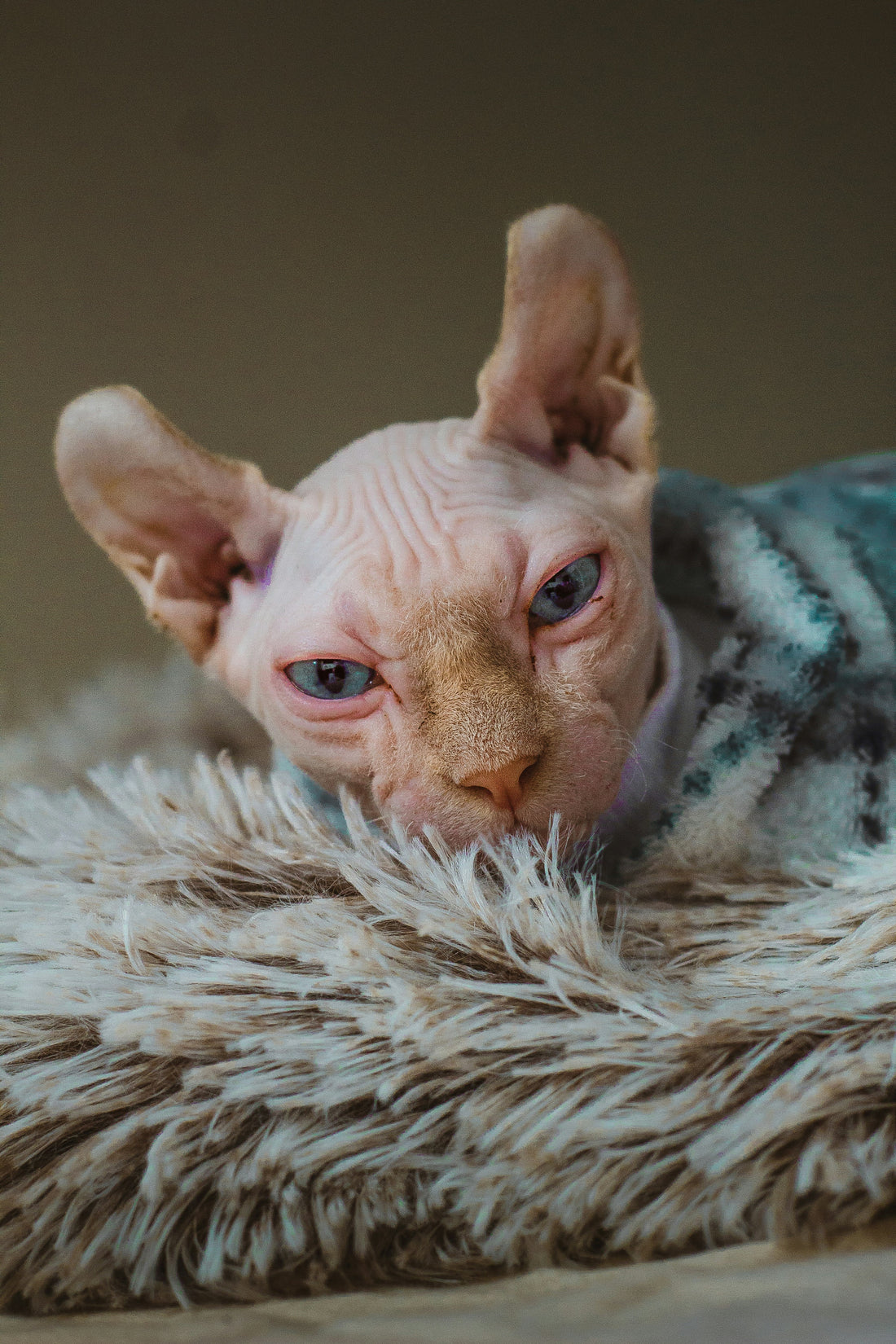
Sphynx Hairless Cat Feeding Precautions: Nurturing Your Unique Feline Friend
Share
Hey there, fellow cat lovers! If you're the proud owner of a Sphynx hairless cat, you know just how special and unique these little furless wonders are. But with their distinct appearance comes some specific feeding requirements that are crucial for their well-being. In this blog post, we'll dive deep into the world of Sphynx cat nutrition and explore all the important precautions you need to keep in mind when feeding your beloved pet.
1. The Power of High-Quality Protein
Sphynx cats are like little bundles of boundless energy! Thanks to their higher metabolic rate compared to many other cat breeds, they burn through calories at a faster pace. This means that a diet rich in top-notch protein is an absolute must. When you're shopping for cat food, keep an eye out for products that list real, wholesome meats like chicken, turkey, fish, or lamb as the very first ingredient.
Protein is the building block for their muscles, and given their active and playful nature, strong muscles are essential for all those acrobatic leaps and sprints around the house. On the flip side, steer clear of cat foods loaded with excessive fillers such as corn, wheat, and soy. These not only offer limited nutritional value but can also potentially wreak havoc on your cat's digestive system.
2. The Right Amount of Fat
With their revved-up metabolism, Sphynx cats also need a diet that contains an appropriate amount of fat. But not just any fat – healthy fats are the key here. Fish oil, for instance, is a fantastic source of omega-3 fatty acids. These fatty acids do wonders for your Sphynx's skin, which is especially important since they don't have a coat of fur to protect it.
However, it's a delicate balance. While fat is an important energy source, too much of it can lead to weight gain and obesity. So, keep a close eye on your cat's weight. Regular weigh-ins and adjusting the amount of food you're giving them based on their body condition are essential steps in maintaining their health.
3. Staying Hydrated: A Top Priority
Dehydration is a real concern for Sphynx cats. Their lack of fur means they don't retain moisture as well as their furry counterparts. To combat this, always make sure your Sphynx has access to an ample supply of fresh, clean water. One great way to boost their moisture intake is by incorporating wet cat food into their diet.
Wet food not only has a much higher moisture content compared to dry kibble but is often more appealing to Sphynx cats in terms of taste and texture. If you do opt for dry food, consider investing in a water fountain. The flowing water can be more enticing to your cat and encourage them to drink more.
4. Establishing a Feeding Routine
Sphynx cats thrive on routine, and a regular feeding schedule is no exception. Given their high energy levels, they may need to eat more frequently than other cats. Instead of one or two large meals, break their daily food intake into several smaller meals throughout the day.
A good rule of thumb is to aim for three to four small meals. This helps keep their energy levels stable, preventing those sudden crashes and also stops them from getting overly hungry, which could lead to overeating. Consistency is key here, so try to stick to the same feeding times as much as possible.
5. Taking Care of Those Teeth
Even though Sphynx cats don't have fur, their dental health is just as important as any other cat's. Dental problems such as plaque and tartar buildup can still occur, and these can lead to more serious issues down the line. Feeding them some dry kibble can actually be beneficial in this regard.
The act of chewing on dry food helps to scrape away plaque and tartar from their teeth. You can also supplement their diet with dental treats specifically formulated for cats or, if you're feeling adventurous, start a regular tooth brushing routine using a cat-friendly toothpaste. And of course, don't forget to schedule regular dental check-ups with your vet.
6. Allergies and Sensitivities: Watch Out!
Just like humans, some Sphynx cats can develop food allergies or sensitivities. Keep a close eye on your cat's behavior and physical condition after feeding. If you notice any signs of digestive problems like vomiting, diarrhea, or excessive gas, or if their skin becomes irritated or they start itching uncontrollably, it could be a sign of an allergic reaction.
If you suspect an allergy, consider switching to a limited ingredient diet or a hypoallergenic formula. It's always a good idea to consult with your veterinarian to help identify the specific allergen and come up with a customized feeding plan that works for your cat.
7. Temperature is Important for Sphynx Cats
Remember that Sphynx cats are more sensitive to cold temperatures due to their lack of hair. So they are cats that need extra clothing to keep them warm, and the temperature of their food can make a big difference when feeding them. Avoid feeding them cold food straight from the refrigerator. Not only is this less appealing, but it can also cause digestive discomfort.
Opt for room temperature or slightly heated wet food. You can gently heat it in the microwave for a few seconds, but be sure to stir it well and check the temperature before feeding it to your cat to avoid burning their mouth.
In summary, feeding a hairless Sphynx cat requires extra attention and care, but it’s all worth it to keep your furry (ok, not so furry!) friend healthy and happy. By following these feeding considerations and tailoring their diet to their unique needs, you’ll be able to provide your Sphynx cat with the nutrients they need to thrive. If you have any questions or experiences to share about feeding Sphynx cats, feel free to leave a comment below. Happy cat raising!
